Iris x germanica
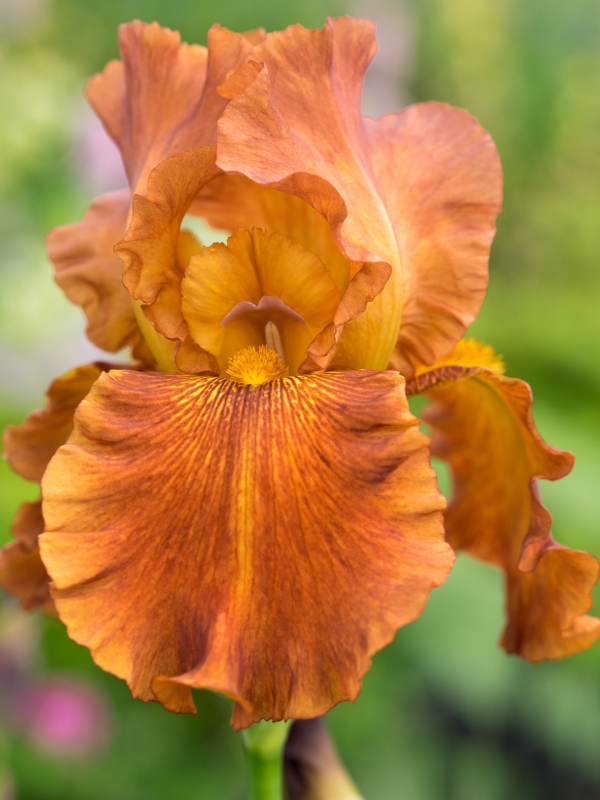
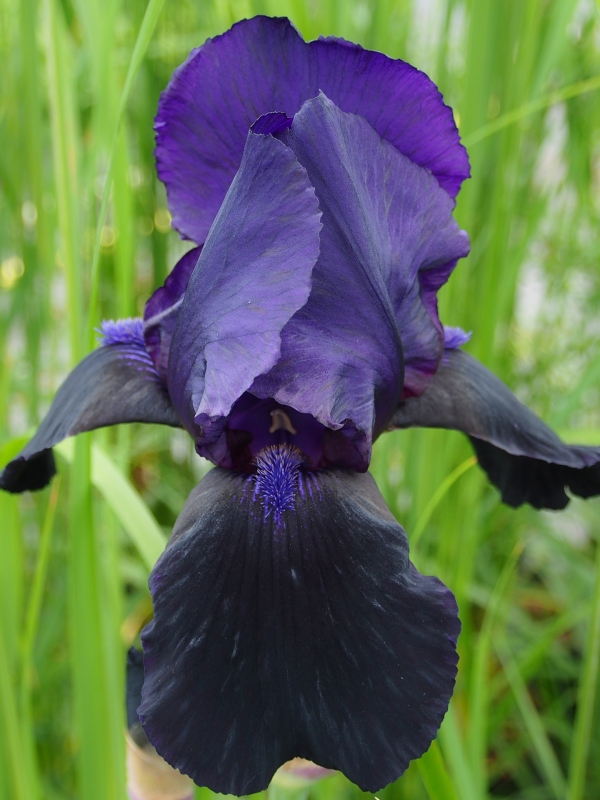
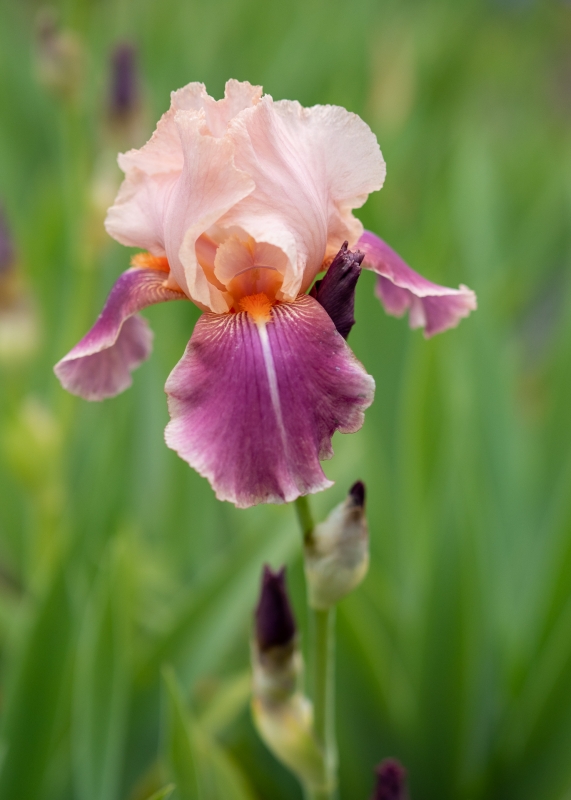
'Carnival Time' 'Deep Black' 'Carnaby'
Not all Iris are drought tolerant, in fact, some of them are marginal or water plants. However, for the purpose of this article we are going to take a look at those that love to bake their rhizomes in the sun.
We are looking at Iris x germanica, commonly known as the bearded Iris.
These stout and showy stalwarts of late Spring and early Summer are rhizomatous perennials. A rhizome is a creeping underground root, which in the case of these plants, is a swollen root that will pull itself to the surface of the soil and soak up as much heat as it can get.
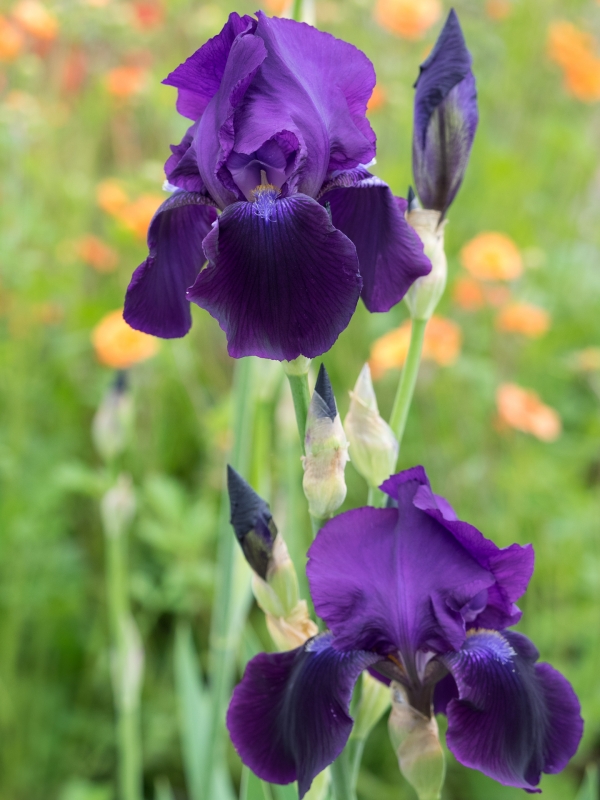
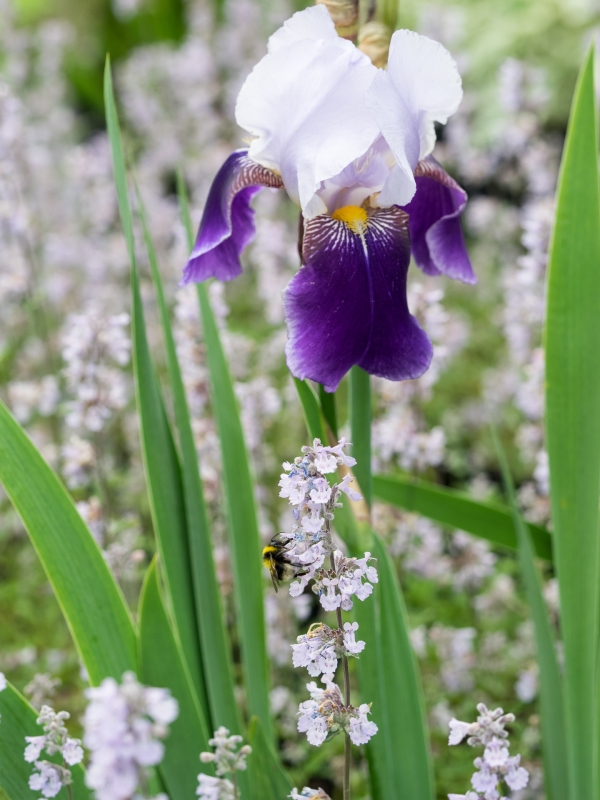
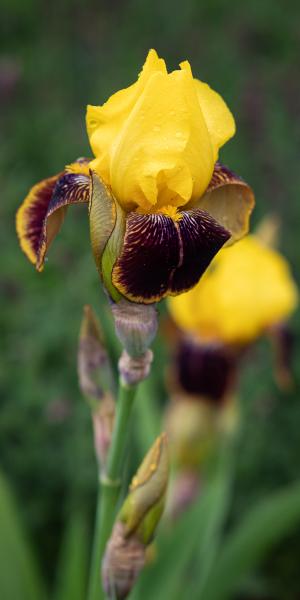
'Sable' 'Braithwaite' 'Rajah'
Over time these roots will spread out making a large patch of rhizomes that will stop almost anything else from growing through. The good news is they can be lifted when dormant and split to make new plants. Just make sure that there is at least one toe (upward growing shoot) on each section of rhizome and discard the woody centre of the patch. When planting, ensure the majority of the rhizome is just below the surface and it will root down, anchoring itself firmly, and then it will slowly expand towards the surface and all the heat it can harness. Separating established clumps in this way will ensure that you get the maximum amount of flower and stop the clump losing vigour due to congestion.
The stems are strong and can hold the spectacular flowers aloft, mostly, without the need for staking. Just don’t put it in the shade. This will cause the plant to go looking for the light and the stems will extend and lean towards the conditions it wants.
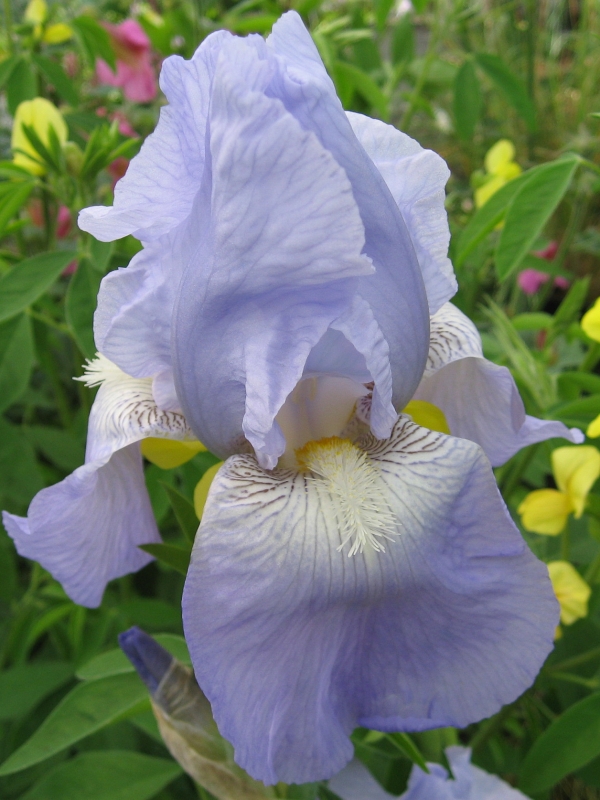
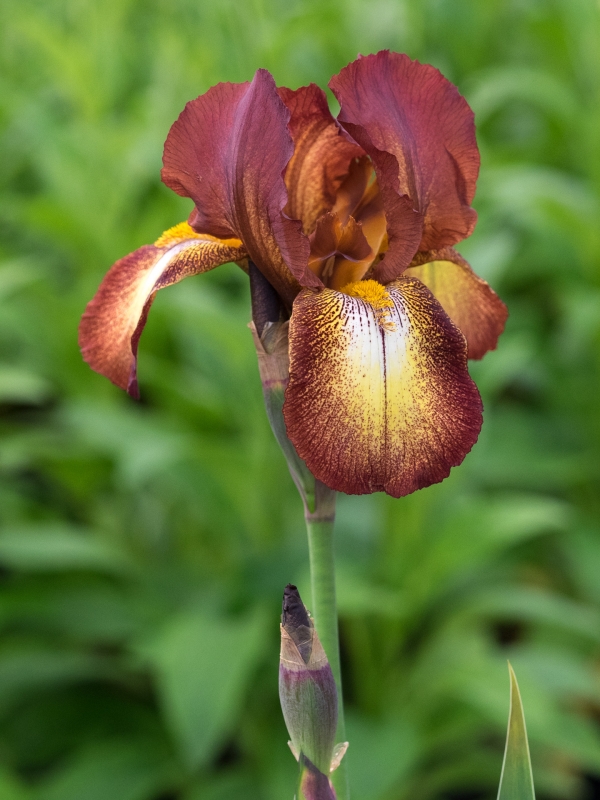
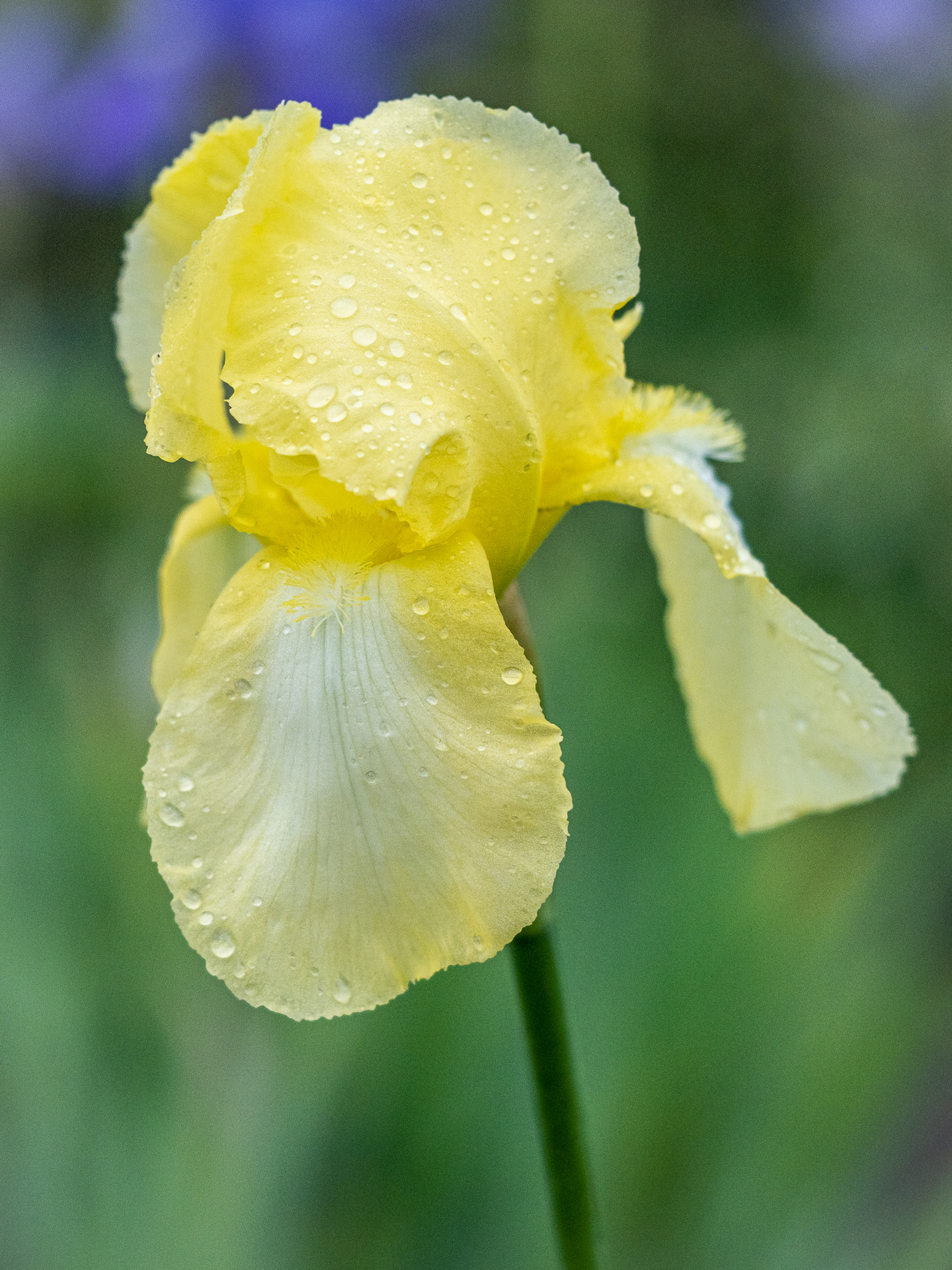
'Jane Phillips' 'Kent Pride' 'Lemon Ice'
Iris germanica don’t enjoy sitting in wet conditions and can rot if left in wet soil for too long. Add grit to the mix when planting, if your soil is heavy. They need good airflow so the humidity does not build up. For this reason, they are often grown in Iris only beds to great effect. Don’t place other plants too close as this can shade the rhizomes of the Iris, as well as slow airflow. Happiest in a neutral pH they will tolerate some alkalinity.
After flowering, cut back the spent stems and this will stop the plant being rocked in the wind. Here on the nursery we also fan cut the leaves after flowering, to keep them tidy. A fan cut is just cutting back the leaves by half in the shape of a fan.
The flowers consist of large inner and outer petals which appear in May and June. The upward growing petals are called ruffs and the lower petals are falls. The term bearded Iris comes from the hair like growths on the falls.
Available in a huge range of colours and combinations, even near black, there is a never-ending range of Iris being bred for the market, so there is likely to be an Iris for almost everyone’s taste.
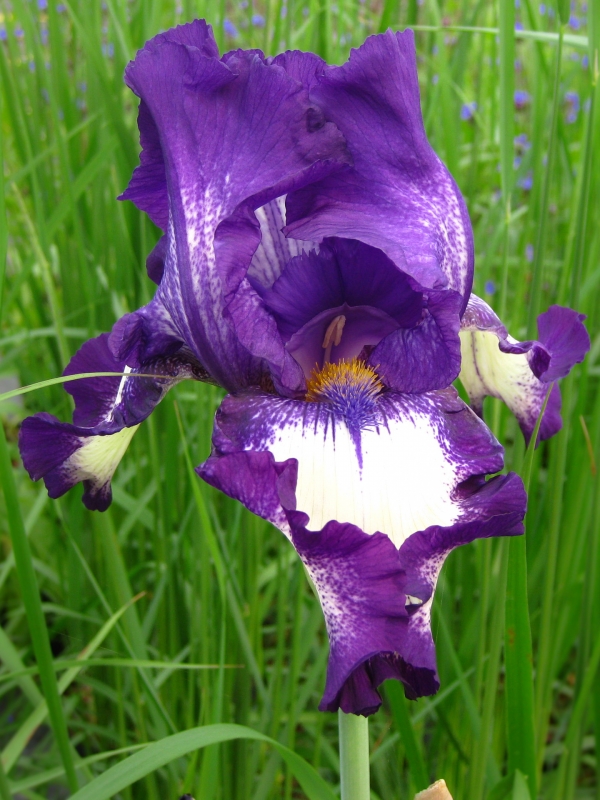
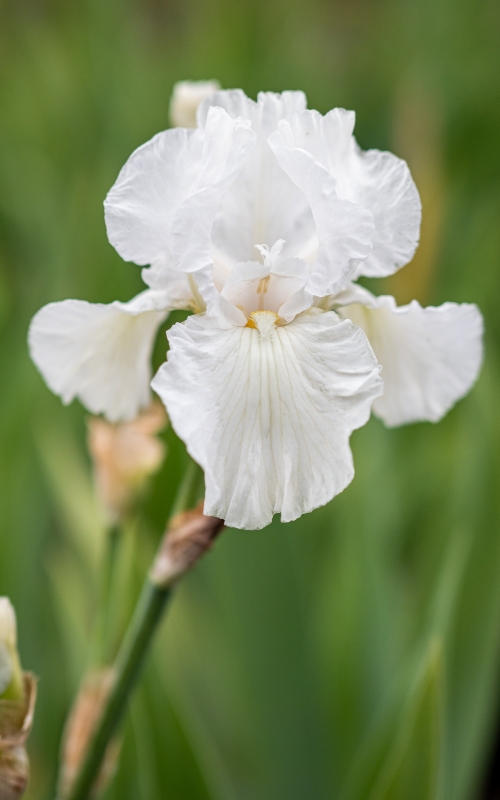
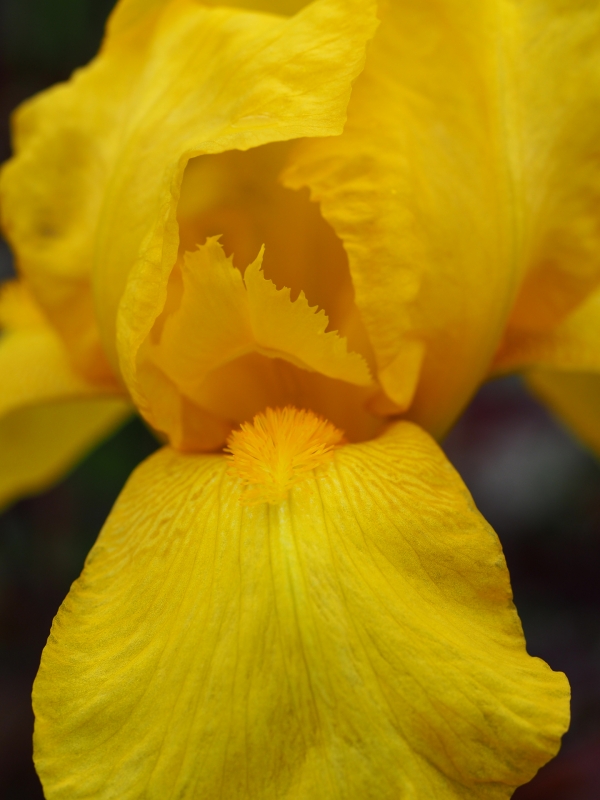
'Stepping Out' 'Winter Olympics' 'Ola Kala'
